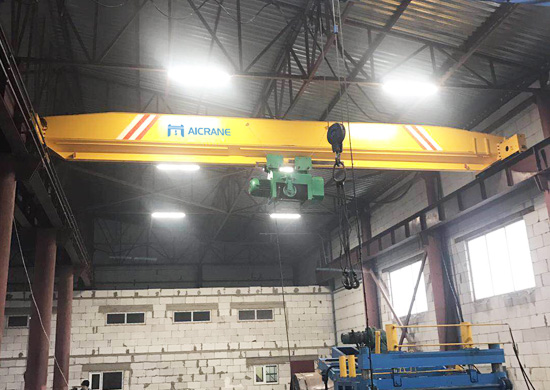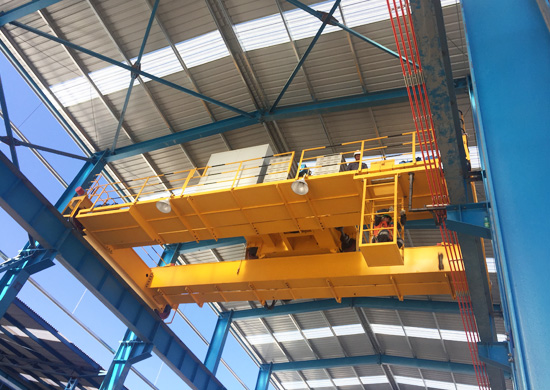When it comes to buying an overhead crane, one of the main questions people have is often whether an under running or top running overhead crane system would be the best choice for their operations. There are overhead crane systems in also sorts of different configurations available, but deciding whether to opt for a top running or under running design is a key decision. Some of the questions you need to answer to determine which overhead crane system would be best include:
• Will the existing support structure at your facility be utilized or will a new support structure have to be constructed?
• What is the maximum capacity of loads your business deals with?
• Does your facility have any existing runways that could be repurposed for a new crane system installation?
• How much overhead room do you have available? Is headroom limited due to light fixtures, water pipes, ductwork, existing cranes, etc.?
• How high up to you need to lift loads?
• Is clear floor space essential for some operations in your facility?

Now let’s discuss some of the features and advantages of top running overhead cranes. Such cranes require the installation of a fixed track or rail system on each runway beam. The cranes can be configured into double girder bridge or single girder bridge designs. A double girder design adopts top running trolley and hoists, while single girder bridge designs use underhung trollies and hoists.
The lifting capacity of top running overhead cranes is not limited and they can be built to lift small capacity and extra-large capacity loads from 250kg to 250 tons. Since the cranes are supported by steel support columns or existing concrete steel building support structures, there are perfect for moving very heavy loads.
A top running overhead crane with a double girder bridge design ensures the maximum possible lifting height in a building since the hoist and trolley travel along the top of the girders. This can result in an extra 7 feet of lifting height. As a consequence, such cranes are ideal for buildings with limited headroom.
While top running overhead crane setups are generally larger than their under running counterparts, they can accommodate higher load capacities and wider spans. Maintenance of overhead top running crane setups is also easier as a suspended load factor does not have to be taking into consideration.

Features Of a Single Girder Top Running Overhead Crane
• Support for load capacities ranging from 250kg to 20 tons.
• Light duty servicing.
• A typical span width of under 65 feet.
• Increased overhead space.
• Cheaper production costs.
• Low deadweight.
• Ideal applications: light assembly line, light manufacturing, fabrication shops, warehousing facilities, and machine repair centers.
Features Of a Double Bridge Top Running Overhead Crane
• Support for load capacities ranging from 20 tons to over 400 tons.
• A typical span of over 65 feet.
• High speed.
• Maximum overhead space.
• Maximum lifting heights and hook length.
• Common applications: large-scale tool facilities, casting plants, large fabrication facilities, paper mills, coil handling foundries, and metal mills.